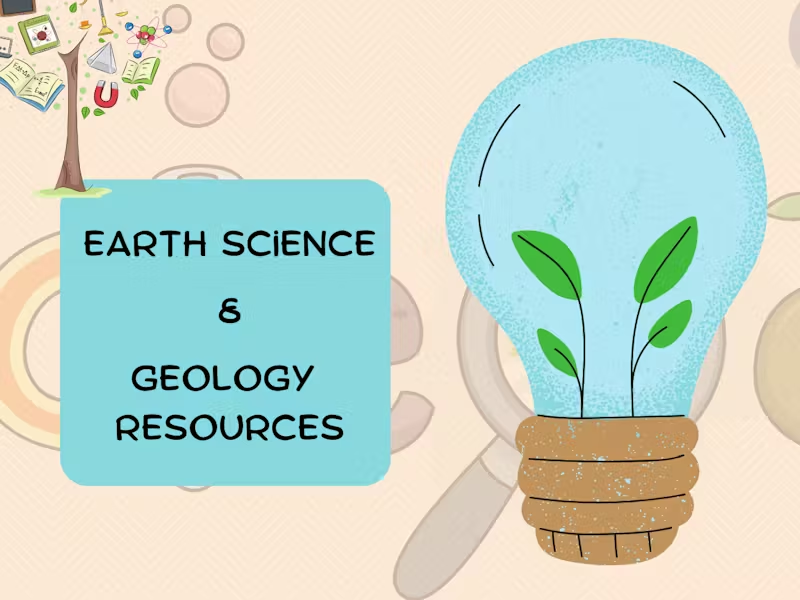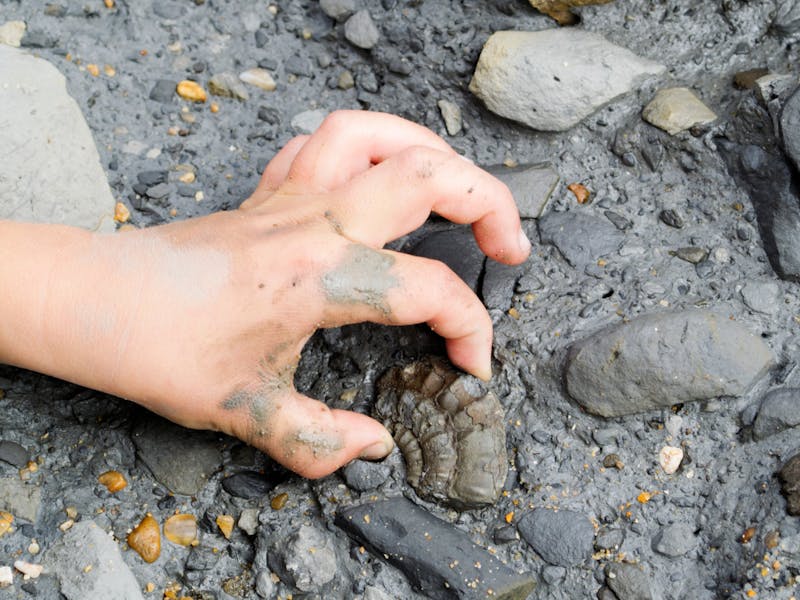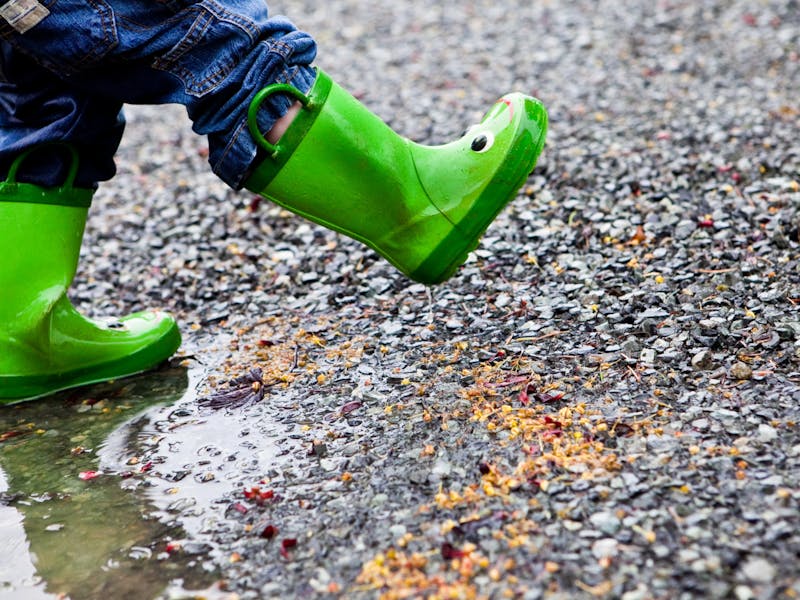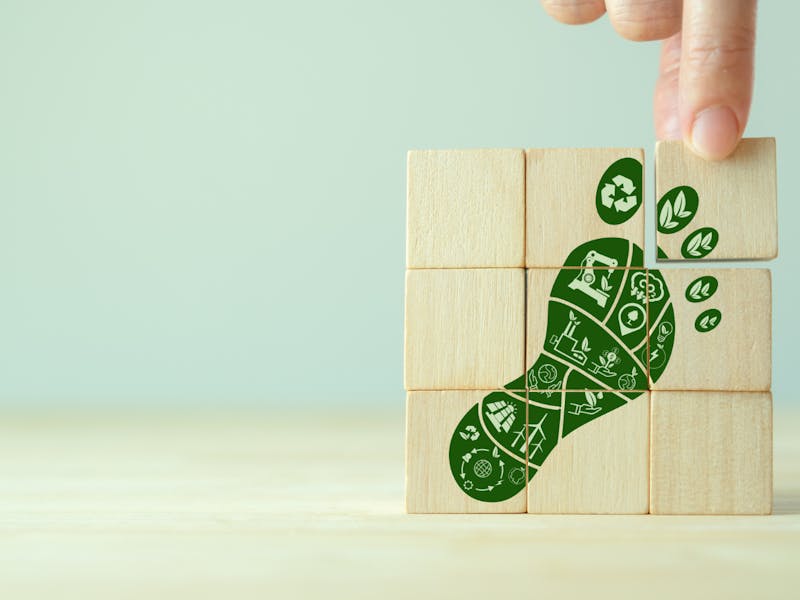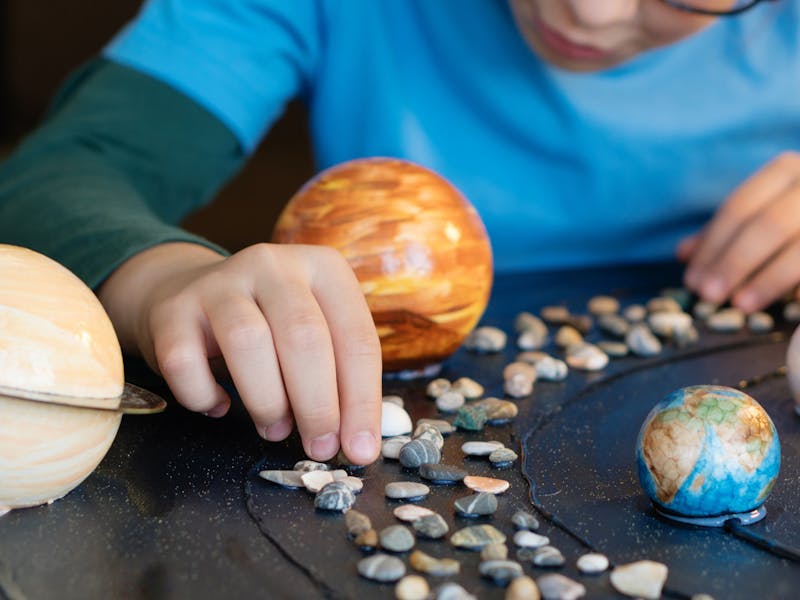Interactive Activities & Ideas for Kids to Dive into Earth Science and Geology
Let’s look into geoscience!
Author: Sarah Perowne
Last update: 2/6/2024

Ready for hands-on interactive activities, tools, virtual tours, and ideas for kids to take a deep dive into earth science? Well, you're in the right place! From geoscience-specific vocabulary for budding wordfinders and learning about the earth's formation to geology resources for teachers, Wordtips has got it all. Your geological adventure awaits!
Earth Science Vocabulary
Discover the story behind Earth sciences and gain a newfound appreciation for the Earth, its intricate systems, and how it began with this section for specialized terminology. For a full list of geology-related glossary terms, the Geological Society has a fantastic resource.
- Geology: Understanding how the Earth is built, what it's made of (like rocks and minerals), and the processes that shape it.
- Meteorology: Figuring out what's going on in the Earth's atmosphere - predicting weather, studying different climates, and how they affect us.
- Oceanography: Exploring everything about the oceans - their makeup, the creatures living in them, and how they affect the planet.
- Astronomy: Looking at the stars, planets, galaxies, and the entire universe to understand what's out there beyond Earth.
- Hydrology: Studying all things water - where it is, what it's like, and how it moves around the Earth.
- Seismology: Investigating earthquakes and why the Earth's surface or crust moves the way it does.
- Volcanology: Understanding volcanoes, how they work, and what happens during eruptions.
- Ecology: Exploring how living things interact with their environment and with each other.
- Topography: Observing and mapping the natural and human-made features of an area, like hills, rivers, and cities.
- Plate Tectonics: The idea that the Earth's surface is like a giant puzzle, with pieces that move around and interact.
- Erosion: Watching how wind, water, and ice gradually wear away rocks and soil.
- Weathering: Seeing how rocks break down into smaller bits, whether it's from wind, chemicals, or living things.
- Climate: Understanding the usual patterns of temperature, humidity, wind, and rain in a place over a long period.
- Hydrological Cycle: Observing how water is constantly moving around the Earth through processes like evaporation, precipitation, and runoff.
- Renewable Resources: Resources like sunlight, wind, and water that we can use without running out because they naturally replenish.
- Nonrenewable Resources: Resources like fossil fuels that are limited and won't come back quickly once used up.
- Biosphere: The part of Earth where living things exist, including the air, land, and water - basically, all life on our planet.
- Geothermal Energy: Energy derived from the heat of the Earth's interior.
- Tectonic Plates: Large sections into which the Earth's lithosphere is divided and float on the semi-fluid asthenosphere.
- Fossil Fuels: Energy resources, such as coal, oil, and natural gas, formed from the remains of ancient plants and animals.
- Cryosphere: This is all about the icy parts of the Earth - like glaciers, ice caps, and frozen ground. It's basically the part of our planet where water is in a solid, frozen form.
- Terrestrial Hydrosphere: This is all about the water that's on land - like lakes, rivers, and groundwater. It's the water you find in places other than the oceans.
Did You Know? 11 Fascinating Geoscience Facts
Discover the wacky, weird, and wonderful world of geoscience facts. Share these intriguing nuggets about our planet's dynamic nature with the most reluctant of science students - it's pretty hard not to be impressed! Science uncovers new facts all the time, so if you've got any we missed, share them with us!
- Earth's Dynamic Interior
The Earth's outer core is in a constant state of motion, generating the planet's magnetic field through the process of molten iron and nickel moving within. - Plate Tectonics Wonders
The Himalayan mountain range, including Mount Everest, continues to grow as the Indian subcontinent collides with the Asian continent due to ongoing plate tectonic activity. - Deep Ocean Mysteries
The Mariana Trench, the deepest part of the world's oceans, reaches a depth of about 36,070 feet (10,994 meters) at Challenger Deep—deeper than the height of Mount Everest. - Ancient Rocks Tell Stories
Zircon crystals found in Western Australia have been dated to be around 4.4 billion years old, providing evidence of some of the earliest continental crust. - Fossil Record Revelations
The Burgess Shale in Canada is a fossil-rich deposit that preserves an exceptional variety of marine life from the Cambrian period, offering insights into the early evolution of complex organisms. - Weathering Wonders
The Giant's Causeway in Northern Ireland is an impressive formation of basalt columns created by volcanic activity and subsequent rapid cooling, resulting in hexagonal-shaped pillars. National Geographic has a great, resourceful video for students to learn more about how Northern Ireland's national treasure was made and formed. - Desert Sculptures
The breathtaking sand dunes of the Namib Desert in Namibia can reach heights of up to 980 feet (300 meters) and are shaped by wind and coastal influences. - Water's Endless Cycle
The water you drink today might have once been part of a dinosaur's bath millions of years ago, as water constantly cycles through the Earth's atmosphere, oceans, and land. - Glacial Time Capsules
Some glaciers, like the Aletsch Glacier in the Swiss Alps, are so massive that they hold layers of ice that provide a glimpse into the Earth's climate history over thousands of years. Want to know more? SciShow Kids has a great video about clues that glaciers leave behind. - Volcanic Spectacles
The eruption of Mount Tambora in 1815 is considered the most powerful volcanic eruption in recorded history, causing the "Year Without a Summer" due to global climate impacts. - And finally…let’s talk about flat earth theories.
While flat-earthers challenge the traditional understanding of Earth's shape, they might find it amusing to know that Earth's atmosphere and weather patterns would behave quite differently on a flat disc. Without the force of gravity, as they perceive it, you could expect oddly slanted trees, sideways rain, and the inability to maintain a traditional atmosphere. So, even in their alternative worldview, the implications for the environment would be quite intriguing and different from what they might expect!
Essential Teaching Tools & Resources for Earth Science
From interactive VR simulations to insightful earth science resources, this collection equips educators with the essentials. Remember, patience is key - rocks may have a laid-back attitude, but they'll always make you wait for the punchline!
Educational Resources for Earth Science Teachers
Discover a wealth of educational resources for Earth Science teachers! From the Geological Society to BBC Earth, these links are your go-to for enriching your classroom experiences.
A huge teaching resource portal from dozens of reputable earth science educational websites for grades K to 12. Explore high-quality pdf literacy documents on topics like climate literacy, advice on running field trips, and geoscience workshops.
Explore hundreds of resources from one of the UK's most important national societies for geoscience. From teacher support to teaching resources, The Geological Society London rocks!
Teaching Earth Sciences is a biannual journal for Earth Science educators. It features articles including topics like teaching methods, resources, and curriculum updates.
Discover free teaching materials with the University of Geoscience UK for teachers, educators, and homeschoolers worldwide. Navigate lesson plans, activities, and curricula areas. It’s aligned with UK qualifications but can easily be adapted.
Explore Earth Science teaching resources, activities, worksheets, and videos from the Smithsonian National Museum in Washington, D.C. Their resources are super easy to navigate.
Uncover the secrets of the Earth we live on with BBC Earth. Created by the award-winning British TV broadcasting company, dive into Our Blue Planet VR or take a deep dive into Giant Manta Rays in Mexico and their habitats on the Pacific coast.
Learn how to run a local impactful eco-club for kids aged 6-12 and help your school or community.
A web-based application that lets you explore the Earth in a 3D environment. Explore the time-lapse feature to see how certain areas have changed or use measurements to understand the scale of geological features.
Learn About the Atmosphere!
What’s going on around us is almost as important as what’s happening beneath the surface. Discover facts about the Earth’s atmosphere with NASA Science or teach students about the difference between weather and the climate.
Dive into a fact file over what's going on in the Earth's atmosphere and how it helps us make the planet a special place to live!
Middle school resource for learning about the difference between the weather and climate. It includes materials you might need, timings for the lesson, and learning objectives.
Available in English, French, and Spanish, the Energy Educations Greenhouse Effect resource is exactly what you need to teach students about the cozy blanket of gases enveloping our planet! With interactive images and further reading, it's a fantastic fact file.
Reveal the mysteries of thunderstorms, tornadoes, and weather patterns with Harmony Square Science's video for kids.
What are clouds made of? Discover the importance of clouds with Ducksters Earth Science in-depth fact file.
Biosphere Resources
Engage in biodiversity activities, discover ecosystems with Britannica, promote conservation with WWF and Marine Conservation Society materials, and discover where life exists and ecosystems thrive.
Explore biodiversity with National Science Engineering Week's Activity Pack, featuring practical activities for hands-on learning about ecosystems and biodiversity. Get students to write a report on the lives and habitats of minibeasts or learn how to make a bird mobile with kids.
Britannica's Kids fact file on ecosystems, food webs, and energy pyramid models.
WWF is passionate about conservation and spreading the word, so it's created a huge collection of tools and resources for educators and parents to help kids get inspired about the world around them. It's previously been recognized as a great digital learning tool by the AASL, too, so dive in.
Looking for ocean-themed fun? Discover activities you can do on the coast with kids or explore the impact of climate change and the effects of global warming.
The Cryosphere
Learn about where the water freezes into snow and ice on our planet with these cryosphere resources.
Permawhat? Learn about Permafrost and its effect on us with PBS's lesson plan. It has learning objectives, discussion points, and activity ideas.
Quick facts, the science behind sea ice, and a comprehensive overview.
A huge collection of ready-to-go Earth Science lesson plans about sea and land ice. Learn about Sea Ice and the Earth with a Story Map or discover when floating ice melts. Sort through by grade level.
What About Humans? Climate Change Resources for Kids
We have a lot of responsibility when it comes to keeping our planet habitable and future-proof. Start from the beginning with these climate change resources for kids.
A UN Environment Program immersive 360 Video for kids to understand how what they eat and do links us to climate change. It's optimized for VR headsets, but you can show the video regardless.
Revise, watch videos, and test students on renewable energy resources with BBC Bitesize.
Cut and stick match activity worksheet to test students on the advantages and disadvantages of renewable energy sources.
Printable activity by 123 Homeschool4Me connecting students with the wider world. Suitable for pre-K to first grade.
Our Land
Explore our land and what’s going on through simulations, videos, and more.
The SDGs in Action Toolkit app is a resource for children to learn about the United Nations' Sustainable Development Goals, fostering awareness and understanding of challenges across the planet and inspiring positive action.
Looking to educate children about geology and plate tectonics? Through engaging simulations, promoting scientific curiosity and understanding of Earth's dynamic processes, Tectonic Explorer does just that.
Diving deeper into tectonic plates? PHET Interactive Simulations help kids understand a bunch of different topics, such as the mantle, the lithosphere, buoyancy, and much more!
Learning Junction has a wonderful video on landforms. They explain each type of landform and define it by its shape, size, location, and what it is made of.
The National Geographic Landform Lesson is an excellent resource, offering interactive materials and activities to explore and appreciate Earth's diverse landforms.
Soil and water are the building blocks of Earth, and the Arkansas Division of Agriculture has a great YouTube video to help children understand their importance.
The World’s Oceans
The world's oceans, covering over 70% of Earth's surface, are vast, interconnected bodies of saltwater crucial for climate, biodiversity, and human sustenance. Explore more with these resources.
A simple guide to the deep sea by TFK.
Immerse yourself in the deep sea, the fauna, creatures, and biodiversity. Explore on a large screen and see if you can identify the different zones.
Following on from the previous activity, get kids to put their learning into practice with Little Bins for Little Hand's hands-on activity.
Another great Ted-education lesson. Discover how ocean currents work worldwide.
High school students can use these resources to work on different topics. Explore Ocean Food Webs, observation models, and scientific modeling.
What’s Going on in the Earth’s Core?
Deep beneath our feet, dynamic processes drive Earth's magnetic field, seismic activity, and geologic evolution; explore more with these resources.
The "What's Inside the Earth" activity from Science Sparks equips children with hands-on experiments and information to discover the Earth's composition and many layers!
It may seem like a silly question, but it raises some really interesting points and complicated concepts; luckily, the excellent SciShow Kids YouTube channel has made it easy to understand.
Have any idea how Geothermal energy works? Well, the Geo 247 PH YouTube channel does, and they explain the process in a simple and kid-friendly way.
The Science Buddies' Geothermal Energy project offers kids a hands-on way to explore the Earth's heat for power generation, promoting an understanding of sustainable energy sources.
Sun-earth Interaction Resources for Kids
Want to know how the sun interacts with the Earth? Explore how important it is here with these hands-on activities.
Free PDF activity to didactically explore solar energy and insulation with kids.
What's going on up there? A great video to explore the effects of the solar system.
Learning About the Terrestrial Hydrosphere
Water, water, water! There’s so much H20 on our planet, and many intricate and fascinating systems contribute to the water cycle, conservation, and distribution. Let’s jump in.
Aimed for 5th grade Earth Science Common Core Standards, Crash Course Kids' video helps kids explore freshwater and the animals that use it to survive.
From fast-moving white water to calm rock pools, rivers and lakes have their own unique biomes. Explore more with Mango Juniors!
Smart videos for curious minds is TKSST's mission. Their groundwater video is approachable, interesting, and informative.
Did you know that around 3.5 billion people might live in water-scarce areas by 2025? Water conservation has never been more important! Here are some tips for kids.
STEM Resources for Earth Science
Discover fun STEM resources for Earth Science—explore geology, weather, and more across interdisciplinary topics!
The Earth Science at Home Teaching resource from STEM.org.uk provides parents and teachers with materials for interactive Earth science lessons, guaranteeing engaging home-based learning experiences for children.
The USGS Virtual Classroom Visits program connects students with USGS scientists, bringing real-world experts into classrooms! Children and adults alike can get excited about how the world works around us.
If you love teaching through hands-on activities and real-world examples, then the 'Hands On As We Grow' Earth Science Experiment for curious kids is your one-stop shop for all things earth science.
Earth science and geology are fascinating; studying it allows us to truly understand the world around us. We hope this comprehensive compilation of interactive activities and resources invites everyone, not only children, to explore the wonders of this planet. From vocabulary to fascinating facts, hands-on experiments to virtual tours, curiosity and education know no bounds. But remember, always keep your feet on the ground!
